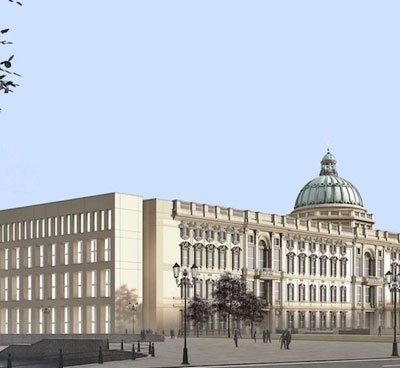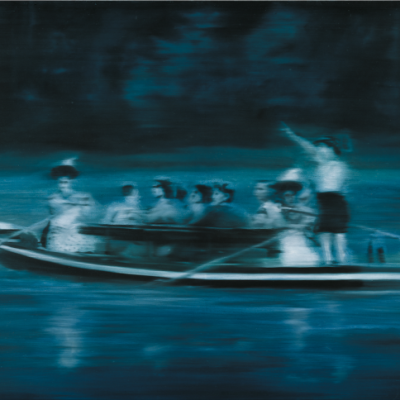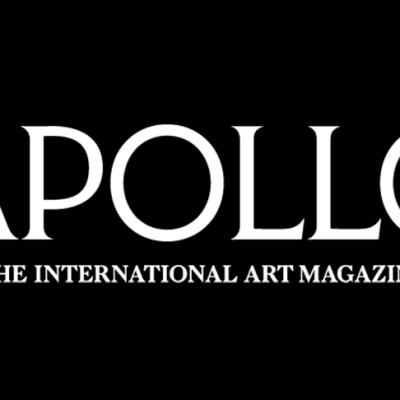Several auctions cluster around the first annual edition of the Biennale des Antiquaires in Paris (10–18 September), an event which this year also coincides with Parcours des Mondes (6–11 September). The most extravagant, and an expression of le grand goût français that until recently characterised France’s flagship art and antiques fair, is the collection of the polo-playing entrepreneur Robert Zellinger de Balkany (1931–2015), offered by Sotheby’s Paris and Leclère-mdv on 20, 28 and 29 September. The 800 or so lots are expected to fetch more than €15m.
The interiors of the hôtel de Feuquières, Robert de Balkany’s hôtel particulier on the rue de Varenne, were of an opulence rarely encountered in the 21st century. The silk-lined and panelled rooms were dazzlingly gilded, as was much of the furniture, and both reflected the collector’s taste for semi-precious hardstones. The Salon Rouge, for instance, was an extravagant combination of red damask and Russian malachite. But what was perhaps most striking about these grand but comfortable Parisian apartments was their generous embrace of different European cultures – notably French, English, and Italian. There was something of the English country house too – an impression emphasised no doubt by the full-length English Van Dycks and Stubbs’ superb Viscount Gormanston’s White Dog of 1781 (estimate €200,000–€300,000).
As one might expect, there was spectacular silver. The highlight is the duc de Penthièvre’s tureen from the only surviving French royal service. Designed by Antoine-Sébastien Durand, it was later adapted by Jean-Baptiste-Claude Odiot and Charles Nicolas Odiot for the duke’s grandson, King Louis-Philippe (estimate €500,000–€800,000). Clocks, however, were Robert de Balkany’s passion, and here are 60 of them. Towering over all is one of the greatest Italian architectural pietre dure cabinets, made in Rome and dating to around 1620. It is not only the scale, and the quality and range of the stones that impress – from rich lapis lazuli to gorgeous Sicilian yellow jasper – but also the remarkably fine detail of the execution. All the statuettes have silver heads, the inner vault and its tiny side doors are mounted with gilt bronze and its floor inlaid with ebony and ivory. The piece’s provenance is as impressive as it gets too – ranging from Pope Paul V to George IV. Robert de Balkany’s father, Aladar, acquired the cabinet on his son’s advice. Any new owner should be prepared to pay more than €2m.
Cabinet (c. 1620). Courtesy Sotheby’s/Art digital studio

Rather more intimate is Artcurial’s offering of the Brollo collection on 14 September. Éliane and Daniel Brollo met Diego Giacometti in Paris in 1965, and a 20-year friendship emerged. The sale offers some 16 pieces of bronze furniture either acquired by the collectors or given to them, as well as preparatory plaster casts and prototypes. Among the more unusual is a pair of gilt-bronze hairdresser chairs with seats of Andean blue granite and mice scaling the legs (€200,000–€300,000). An additional treat is the display of photographs of Giacometti in his studio, taken over the years by the Brollos’ son, Frédéric.
In London, it is the collection of the late British art critic Brian Sewell (1931–2015) that goes under the hammer at Christie’s on 27 September. Sewell worked at the auction house as a picture expert between 1958 and 1967, after leaving the Courtauld Institute. He entered the public consciousness at the time of the exposure of the art historian and spy Anthony Blunt, a former tutor and friend whose spokesman he became. That led to columns in Tatler and the Evening Standard, where he was proud to claim himself the only art critic read by shopgirls and taxi drivers. Off the page, his much-parodied voice was distinctive – one might say, preposterous. On it, his acerbic wit and unfashionable opinions came with the full authority of a well-trained eye and sound art history.
Unsurprisingly, his own collection of some 200 Old Master and modern British paintings and drawings appears to have been entirely figurative, and also favoured male nudes. What is strange is his penchant for rather dull and mediocre productions of the Bloomsbury Group. Works carry estimates ranging from under £1,000 to £600,000, and on offer at the top end is Sewell’s pride and joy, Blowing Hot, Blowing Cold by Matthias Stom (sometimes called Stomer) – one of the many Dutch Caravaggisti who worked in Rome and Naples in the early 17th century.
Blowing Hot, Blowing Cold (c. 1600–after 1652?), Matthias Stom. Christie’s Images Ltd 2016

This typical candlelit scene illustrates one of Aesop’s fables, the story of the Satyr and the Traveller, a narrative particularly popular among Northern artists and much painted by Jacob Jordaens. In the original tale, a satyr taking pity on a traveller wandering deep in the forest in winter invites him home and is astounded that his guest first blows on his fingers to warm them, and on his soup to cool it. This inconstancy – blowing hot and cold with the same breath – leads him to banish the traveller from his home. In La Fontaine’s Fables, however, there is no moral or allegory. For the Northern painters, it seems that it is the satyr who visits the peasant and his family, and here Stom depicts him as simply incredulous – the subject a wonderful conceit to bring the fantastical into everyday domestic life and record the effects of candlelight on the different surfaces of flesh, drapery and earthenware (£400,000–£600,000).
In New York this month, Asian art takes the stage. On 16 September, Christie’s offers a selection of works from the private collection of British dealers Marcus and Debby Flacks, who in 2012 closed their New York gallery – ‘a very expensive luxury’ now that 90–95 per cent of their business is with Asia. The sale, according to Marcus Flacks, represents ‘a good slice of everything that has been in our home’, and while it mirrors the works of art in their stock, its contents were never part of their inventory. As he writes in the catalogue introduction, ‘the dealer informs the collector and the collector inspires the dealer’.
A pair of huanghuali and spotted bamboo scholar’s cabinets (17th century). Christie’s Images Ltd 2016

Included here are some 46 works, embracing everything from Chinese ink paintings to scholars’ objects and furniture. Estimates range from $3,000 to $3m – the latter the price tag on a remarkable pair of spotted bamboo and huanghuali cabinets from 17th-century China. Possibly unique, these richly figured and perfectly proportioned tapered cabinets are a perfect expression of literati taste – refined and understated.
From the September issue of Apollo: preview and subscribe here.



